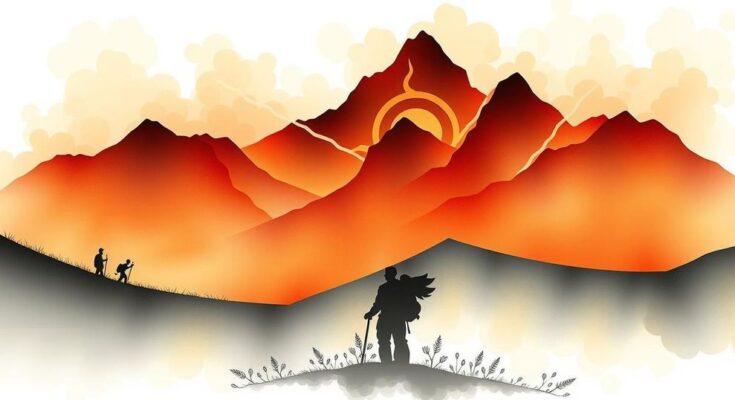Iran’s economic crisis, exacerbated by mismanagement and sanctions, has severely impacted women’s financial stability and rights. The ‘Women, Life, Freedom’ movement marks a significant push against systemic oppression, with increasing numbers of women asserting their rights and choices. Despite challenges, activism continues as women navigate oppressive conditions and seek equality.
Iran faces a crippling economic crisis stemming from corruption, mismanagement, and international sanctions. President Donald Trump has enforced a “maximum pressure” campaign, significantly affecting the economy as oil exports collapse and the currency weakens. One impacted individual, Narges, a 36-year-old artist from the impoverished Sistan and Baluchestan province, has noted a deterioration in living conditions for her community, despite its resource wealth. She highlights the increased reliance on online platforms for economic survival in a restrictive labor market.
The Baloch, a marginalized Sunni minority, endure compounded difficulties from drought and long-standing discrimination. Narges observes that as resources dwindle, women often dictate household spending, prioritizing others’ needs over their own. Since President Masoud Pezeshkian took office in August 2024, the Iranian currency has lost approximately 50% of its value, with inflation reaching 31%. A report from the Iranian Majlis indicates over 30% of the population struggles with basic needs.
Union activist Simin Yaqoubian has expressed concern for working women, particularly single mothers, who now face an acute existential crisis. Despite an increase in female representation within the government, substantial changes for women’s rights remain elusive. Yaqoubian criticizes the situation, questioning the effectiveness of government initiatives in providing improvements for women, who are often exploited in low-wage jobs.
Iran’s female labor force participation rate stood at only 14.38% in 2023, starkly lower than neighboring countries like Saudi Arabia and Oman. Economic challenges often lead to women, such as 36-year-old Maryam, losing their jobs first amidst crises. Maryam, limited by a genetic disorder, faced job loss without adequate flexible work options and has since relied on her father for financial support amid rising medication costs.
Moreover, state pressure on activists is escalating, leading figures such as lawyer Marzieh Mohebi to flee the country for safety after her NGO, the Sora Women Lawyers Association, was scrutinized for aiding incarcerated women. Mohebi reflected on her organization’s significant contribution to women’s rights advocacy before it was dismantled under governmental pressure.
In recent years, a surge of defiance has emerged among Iranian women, particularly following the death of Jina Mahsa Amini in police custody in 2022, which ignited protests demanding political reform and gender equality. The ‘Women, Life, Freedom’ movement has emerged as a powerful symbol against oppression in Iran, inspiring many young women to assert their rights.
Women increasingly choose to forgo the compulsory hijab, demonstrating a shift in attitudes amidst a patriarchal society. More families are allowing their daughters freedoms in personal expression, marking a societal transformation in places like Baluchestan. Narges notes this change, stating, “The ‘Women, Life, Freedom’ movement has transformed us,” indicating an ongoing evolution in women’s rights and societal roles in Iran.
The current economic crisis in Iran has intensified the struggle for women’s rights, as many women assume financial responsibilities during dire conditions. Despite limited governmental improvements, activism continues as women strive for equality and freedom, ignited by movements like ‘Women, Life, Freedom.’ As societal attitudes evolve, particularly in conservative regions, women increasingly assert their personal choices against systemic oppression. The resilience shown by these women underscores a significant shift in the fight for their rights.
Original Source: www.dw.com




